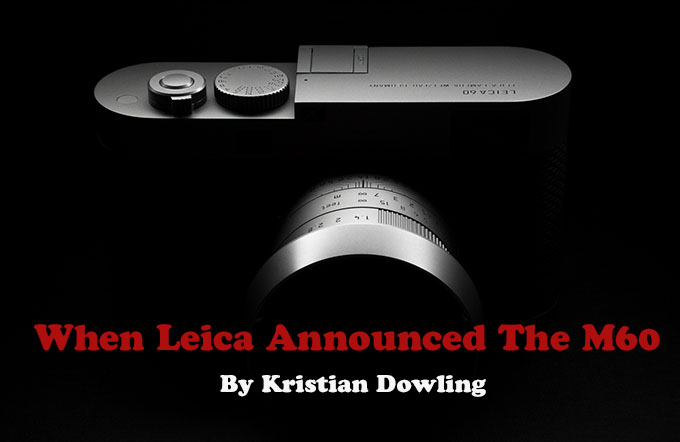
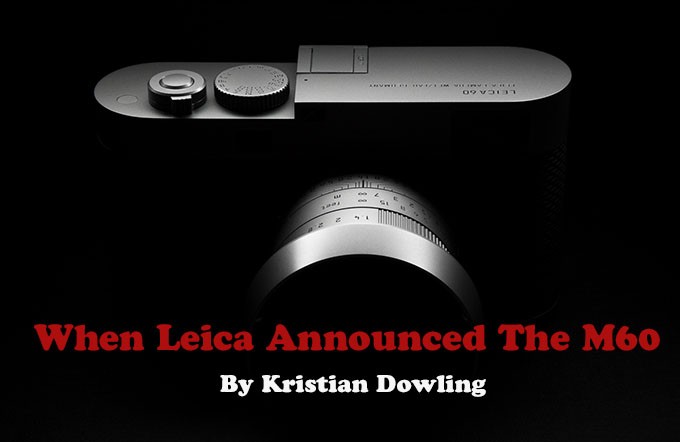
When Leica announced the M60
By Kristian Dowling – http://kristiandowling.com
My Leica M quest started some 22 years ago with the Leica M6 (classic). I haven’t shot film for over 12 years, and in this time I have developed an insecurity that has been derived from digital technology, allowing me to view images immediately after pressing the shutter button. This insecurity has led to many missed opportunities, missed moments, and ultimately – missed shots, and this results in a form of failure. Sure, I’ve learned to accept this failure by knowing that the security of ‘being sure’ I have the shot saved on a plastic card is reassuring enough to understand it’s all worth it…..but what if the LCD was taken away?
When Leica announced the M60 (LEICA M EDITION “LEICA 60”), the news was met with a lot of mixed emotions. Its claim to fame is that it is the only Leica M camera ever made in complete Stainless Steel. Described by Leica as ‘The essence of photography’, and ‘an homage to the art of photography’, you wouldn’t really understand unless you shot with a Leica film rangefinder camera…..or with the M60. Why? Because they decided to remove what’s most valuable feature to the modern photographer. The one thing we all rely on, and the one thing that makes us insecure when shooting – the LCD. Now I know what you’re all thinking. “I’m not insecure because I use the LCD. I don’t NEED the LCD. Why would they remove it, when it’s the one feature that completes a digital camera and truly makes it useful?” – let me answer that shortly.
There were 600 Leica M60 packages produced, and they’re almost completely sold out now, yet I haven’t seen many photographers out shooting with them. This is a shame because while it is a highly collectible camera, it’s also designed to be a ‘shooters’ camera, and in my opinion, begs to be used! I first came into contact with the unique camera in Singapore recently, where my good friend Alwyn Loh showed me his new baby. When placed into my hands I could not believe the feel of it. Super solid, sharp lines, more heft than any M, and looks to die for. The finish on the camera is impeccable and really shows that Leica has maintained their standard of first class finishing into the 20th century.
A week later in Bangkok, one of my friends, Lawrence Becker pulls out what looks like an M60, only he tells me it’s ‘not quite an M60’. Upon further investigation I see that it’s actually an M60 prototype, 9 of only 11 made, with matching lens and body. The beauty of purchasing Leica packages like this is that you can be assured that the body and lens are calibrated perfectly to each other, ensuring ultimate calibration, and perfect image quality. After doing some research I haven’t been able to find any information that points out the differences between the prototype and the M60, so felt there’s only one thing left to do – shoot!
The design of the M60 is minimalistic and clean. There is nothing on there that is not essential to basic picture taking. The shutter release has no option for soft release, and there are no lugs, so there is no way to attach a strap, unless you use the included leather case/strap combo, or buy an aftermarket strap that attaches to the tripod socket on the bottom plate. As there is no LCD (replaced by ISO selector), there are no menu options. There is no way to select white balance (AWB only), but there is a button allowing you to see how many frames you have left, as well as battery percentage in the viewfinder – very smart, and needed. All files are recorded in RAW only.
In the hands, the camera feels like no other digital camera I’ve handled before. It is the same thickness and shape as the current M240, yet has a higher weight, and the edges are much sharper. The covering is grippy and really well done, with little grove cut-outs I’ve not seen on an M camera before. The finish is smooth to touch, and doesn’t show finger prints, unless you have a lot of oil on your hands. Put simply, it’s the best-finished digital M to date, possibly alongside the M9Ti.
Walking around carrying this exquisite piece of Stainless Steel in your hands comes with an initial fear of dropping it, and exposing the steel underneath the finishing. After a while, the fear turned into confidence once I got my feet wet and snapped a few frames. After using standard M’s all my life there is something special about carrying around such a unique piece of machinery. Sure, it’s essentially an M240, but the heft, finish and rarity instil a feeling of excitement too.
The M60 is designed to feel and function like a film camera, with the versatility of being about to record images in digital. Where the LCD is usually positioned, on the back cover, you now find the old ISO selection wheel, completing the film-camera look and feel.
When shooting, the first thing I noticed was the shutter. I assume it’s the same in all-digital M240 variants, but what changes is the sound. Due to the acoustics of the stainless steel frame, the shutter sounds sharper, faster and quieter. The next thing you notice is that what made you insecure when shooting is no longer present, and now you’re in withdrawal. It’s an empty feeling knowing that you cannot view the picture you just took, especially when you know you’re using a digital camera. At that moment, I’d never felt more insecure shooting, ever.
Upon shooting my next few frames, Déjà vu struck! I began to reminisce about the good old days where I would shoot without thinking about the camera, or the photos. Photography was ‘all about shooting’, and not reviewing, and now I could be free of my insecurity and be 100% in the moment. I can’t explain how refreshing this feeling was. Needless to say, I was happy, and felt my love for photography starting to re-evolve. I know it sounds corny, but wow, what a feeling of relief.
The next question I asked myself was ‘what do I do about exposure?’ In the past I used a handheld meter and rarely relied on the built in meter. Sure it is good as a guide but it’s certainly not 100% trustworthy because it meters off reflected light, and not the actual ambient light falling onto my subject/scene. Since moving to digital, I’ve never used a light meter in a camera. My 22 years shooting in manual with a hand held meter allowed me to record a mental database of exposures I recall and input into my camera……but, I usually use my LCD to confirm I am correct, or at least close, then adjust accordingly.
Seeing there is no option here, I would have to rely on my mental database, and use the built-in meter as a guide if I was unsure, as I had no access to a handheld meter at the time. Once I became comfortable with this, I was free to shoot without concern. I only had about an hour with the camera, but in this time I could see why Leica took a chance and created the M60. From the very beginning, Leica cameras have always been about keeping things simple, and putting total control into the hands of the user, without gimmicky functions getting in the way or becoming a distraction. The less the user has to think about the camera, the more they can focus on the moment and capturing it with total focus and concentration.
I even noticed that interacting with subjects is easier because they can see that I’m not looking at my camera to review images, and this has a huge effect on my ability to get what I need from a situation. While there are a lot of benefits from sharing the images with subjects during a shoot, there are a lot more benefits of not sharing, especially in street and documentary scenarios.
The M60 (prototype) is ALL about the experience of shooting – taking photographs in the exact same way as you would with film, yet with the advantage of being able to view, edit and distribute the images immediately with convenience of digital technology. The results were pin sharp, as sharp as I’ve ever seen from a 35/1.4 ASPH on any Leica M, somewhat like the pin-sharp results from an M-Monochrom. Again, this shows how important it is to have a lens and body perfectly calibrated to obtain the best possible image quality.
From my limited experience, I believe the M60 concept is a winner. Not just for collectors, but for those who value top quality Leica products – along with the added benefits of shooting in such a pure way. The price of the kit has just dropped by 12%, and there are some good deals to be had. Worst case, in years to come, the lens alone will hold the value of the kit, considering there are no more stainless steel lenses/kits like this produced.
Blending the worlds of analogue and digital may sound like a stretch on paper, but in reality it really proved to be a rewarding experience, and one I would love Leica to pursue further. I’m not saying they should remove the LCD’s from all their cameras, but it would be nice to see them releasing a version of the M without an LCD to cater to those who value the true and traditional M shooting experience. I know for me, it’s a very good fit for those times I want to shoot and be completely in the moment and focused the way I’m supposed to be.
Kristian Downling
You can buy the M60 from Ken Hansen (khpny19@aol.com) or Leica Store Miami.

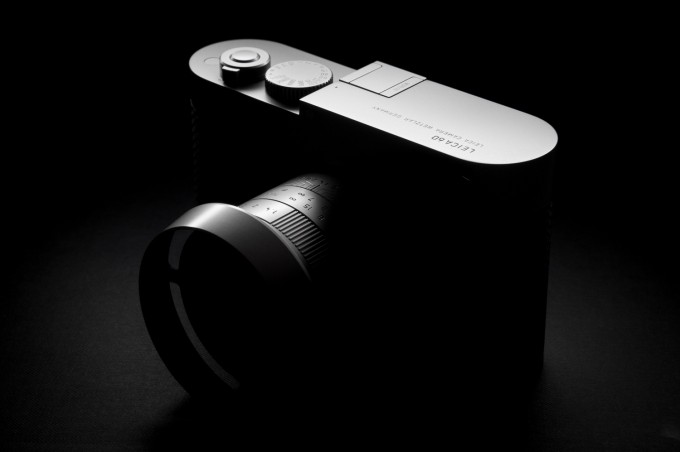
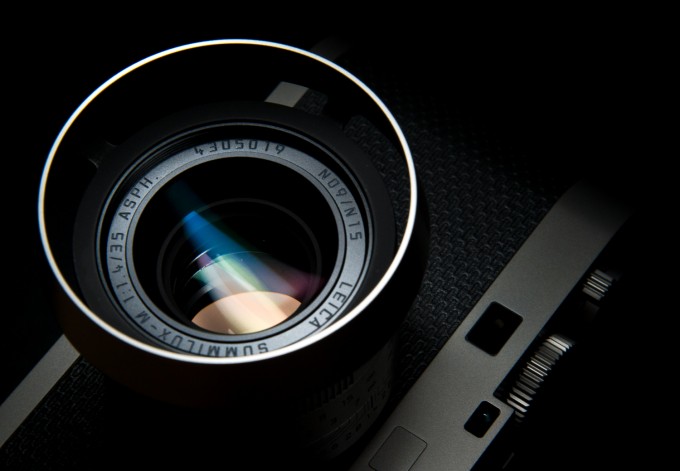
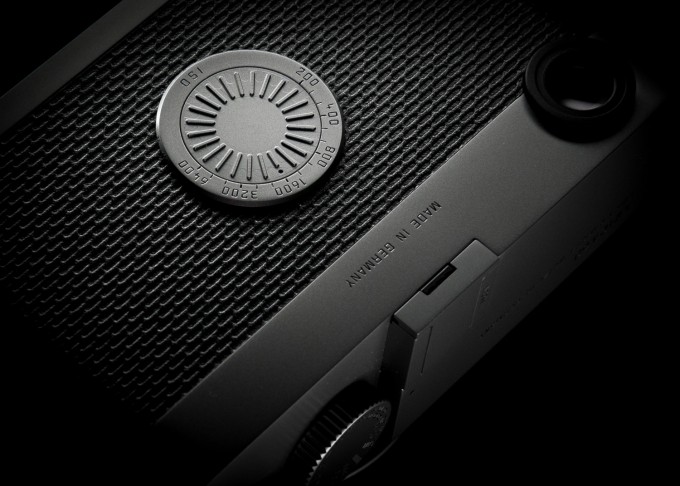
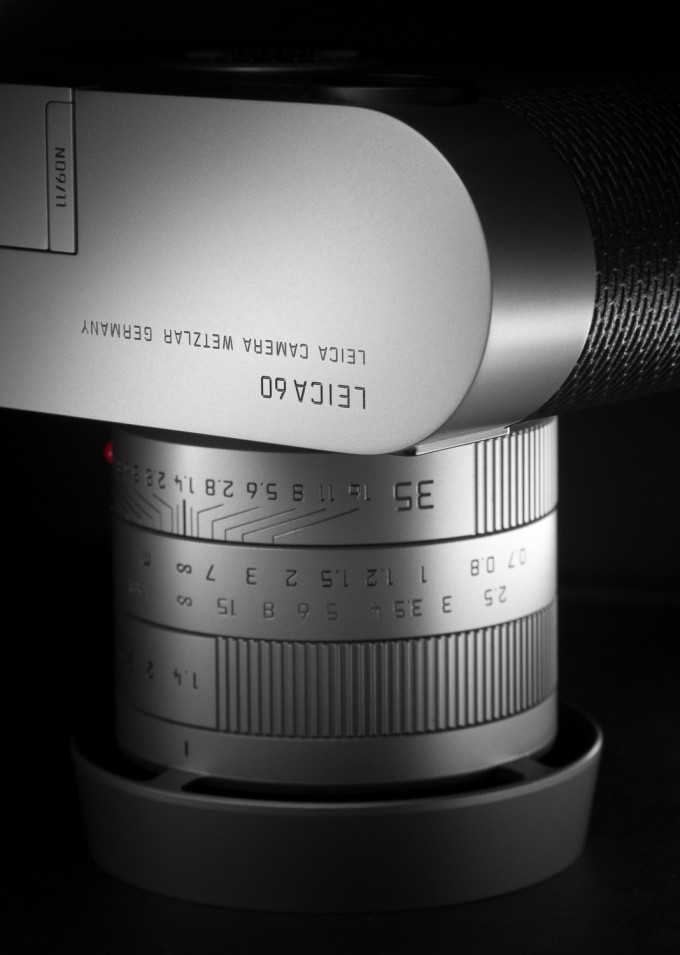
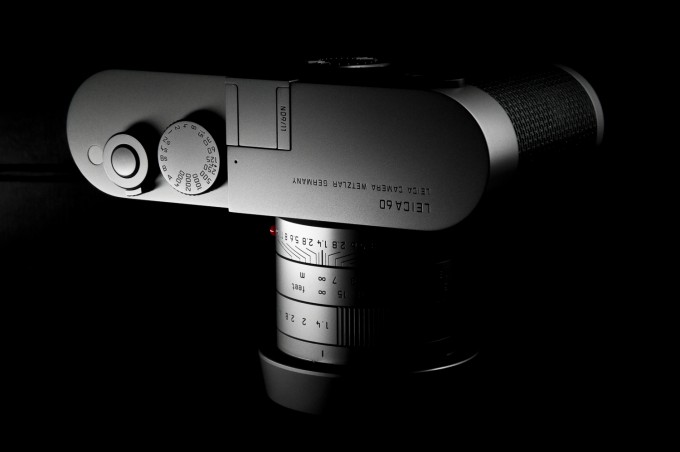
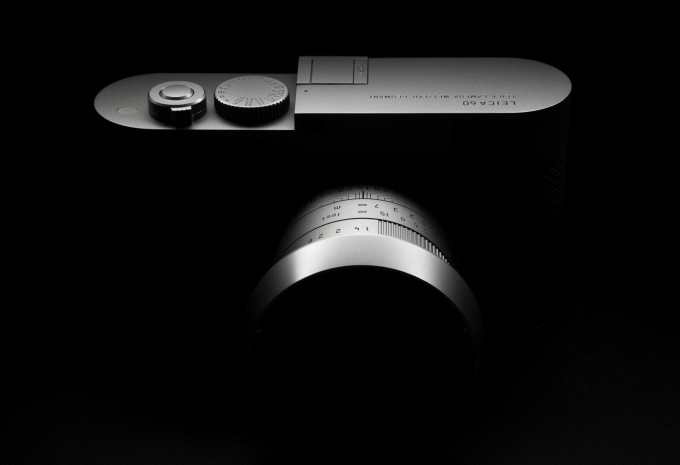
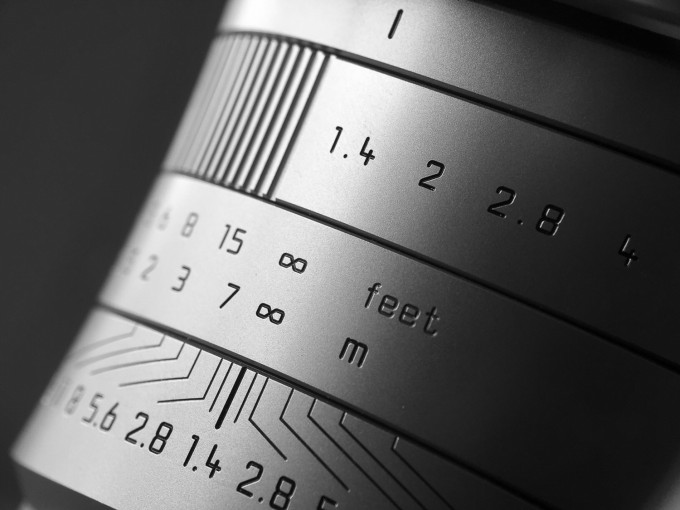
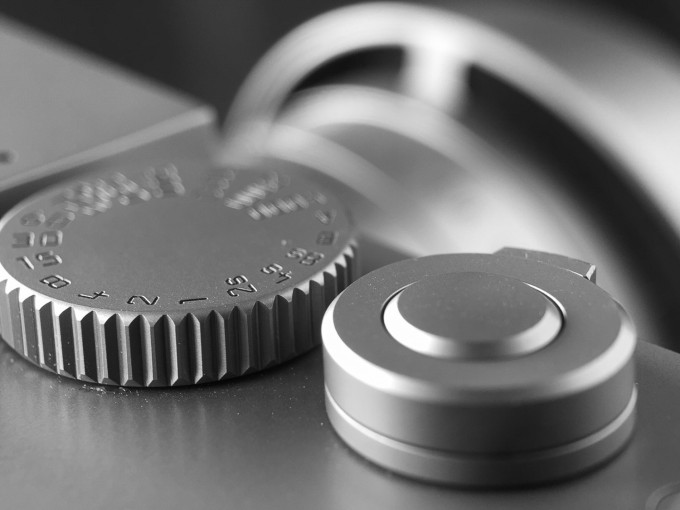
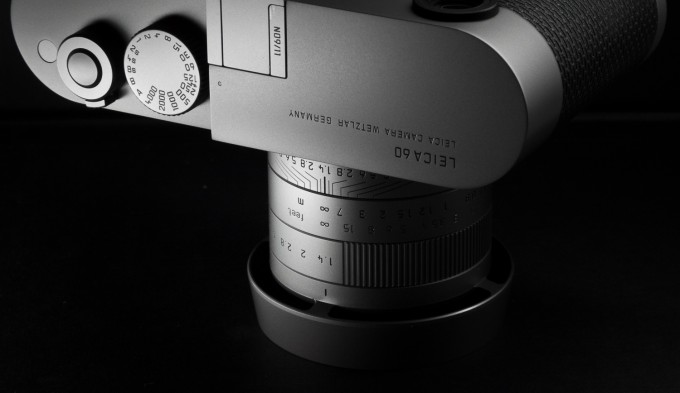
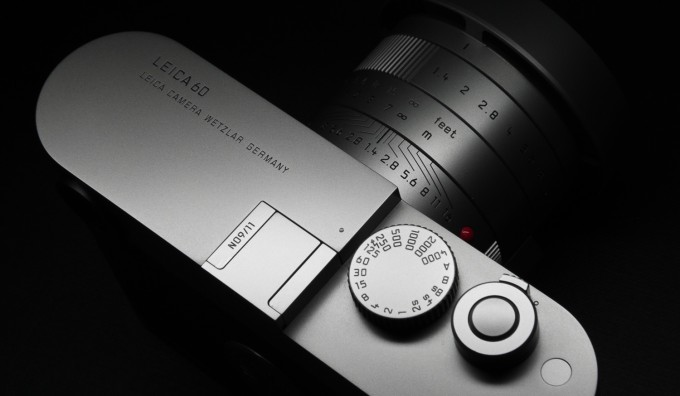
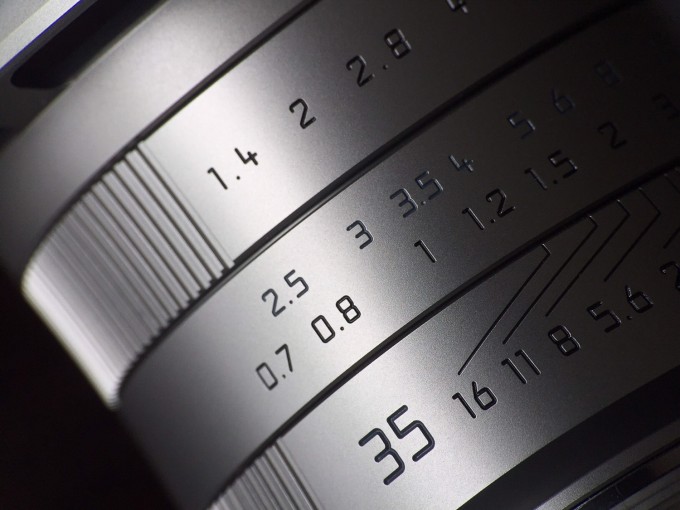


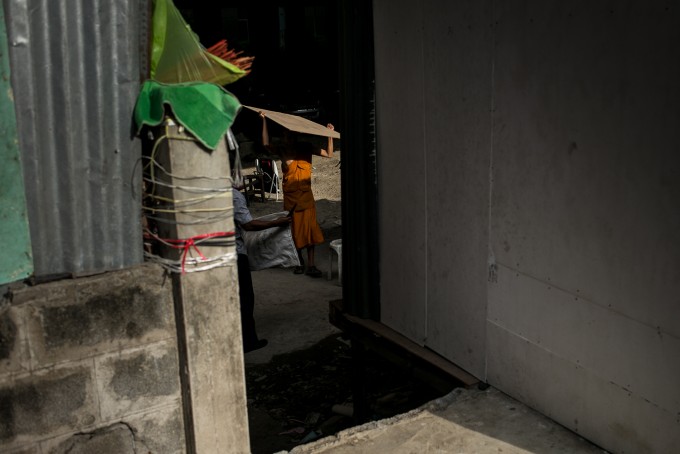




It is very interesting how this Camera M60 create a flammable debate…. In France, it’s the same.
Patrick has a point above when he is talking about the Arrogance of the idea behind this tool:
Ultimate photographer don’t need screen because THEY KNOW how to take good pictures.
Link that to a very high price, and you create an explosive device.
I love the M60 for a lot of reason, but it is not reasonable to debate on it.
It’s like a 300-foot yacht: Tacky and unjustifiable. Did Kristian give $1,000,000 to charity last year? Well, he should have given $1,016,000.
Wow, not really sure what to say after such heated comments…other than ‘I’m glad some people appreciate the article’. Cheers to Steve for hosting it and thanks to his support readers. KD
I would like to know the cut-off point after which a camera becomes too good to shoot poor folk. I’m sure that there has to be a brand multiplier, too. So the Leica brand multiplies the dollar value by 1.50x, and the Nikon brand reduces it to 0.75x.
So, if you’re shooting with a $6,000 Nikon, as opposed to a $6,000 Leica, the Nikon’s actual value is $4,500 while the Leica’s actual value is $9,000. And if the cut-off point is $5,000, you can therefore photograph poor folk with the Nikon without exploiting them.
I think there is a much more important topic here of how people are treated when you’re shooting them, regardless of wealth. It could be said to be worse if you have hundreds of thousands in your bank account, and choose to use a Pentax to shoot the poor, yet donate absolutely nothing to them.
It’s a silly debate really. It’s not like you roll up to a ghetto in a Rolls Royce. We should shoot what you like with the camera you like, and treat our subjects with respect. There’s nothing more to say on this topic. Cheers, KD
two things.
One, here we go again, another series where poverty and misery of people is exploited to give impact and emotional punch to otherwise so-so images. I don’t mind such photos in the context of serious photojournalism or a reportage with the right intentions. But this is a camera test about not using an LCD. (And I seriously hope nobody responds with the ‘giving a voice to the poor’ bs.)
Two, your arguments for not having an LCD are fair enough; and if you have a light meter built into your muscle memory from your film days, then good for you. But then please back these arguments up and not only shoot in beautiful late afternoon light and magic hour. Nobody needs an LCD at magic hour. But what about backlight? Into the sun? Harsh light at noon? Low light? Darkness? How does the non-LCD, non-light meter M60 work then? Pressing the shutter while keeping the fingers crossed? That, I would really like to know and would respect.
Sorry I might be a bit harsh here, but this is Leica’s most ambitious (and expensive) camera and you seem to have experience, so I think it’s fair enough that I voice my opinion.
What got me though is that you made it so easy for yourself: photographing some people in a slum at magic hour to show that the M60 (and you) make great images… which to me is like a cheap shot with a very expensive camera, and really not that difficult to do (if you have the stomach to test a camera there in the first place). But then talking about it like it is the holy grail of the essence of photography is a whole other thing.
To me, there’s some arrogance and snobbery in the concept of the LCD-less, über-expensive M60, but Leica masked it cleverly as purity and essence. Because it’s for the pure photographer. The really, really good photographer, who is so good and no longer needs an LCD, a light meter, and god forbid, AF. He needs nothing anymore, except maybe for some poor kids in a slum, at beautiful magic hour…
Patrick that is harsh and unwarranted. The amount of people having a crack at Kristian here for shooting in that environment is ridiculous. It’s pretty simple….he was in the area which he visits alot, took out a friends camera and took photos.
As for you finding arrogance and snobbery in not having an LCD is called someone else’s preference. Please…turn it up!
The M60 has light-metering. The normal left, right and dot at the bottom of the viewfinder.
No changeable settings for the type of metering, just one standard setting.
For decades upon decades photographers were able to shoot in all light conditions with perfect exposure using a much more rudimentary light meter than the one in the M60, if removing the screen at the back of a camera exposes how poorly kept any given photographer has maintained their light metering skills is by no means Leica’s fault. You’ve forgotten that the best photographer is the one who knows and understands light, and exposing correctly, which you considered to be “impossible” in your comment, is actually the first skill any good photographer should master. Anyone who dislikes the Leica M60 is simply lacking experience, knowledge and wisdom in photography, and has focused so much in the scientific part of photography that they feel uncomfortable with the artistic side of the equation.
I was using Fuji x100 for some 4 years, now mostly Fuji XT1. Usually after taking the shot I see the preview in the EVF, 1 second, enough, enough to know is it technically ok (x100 has some quirky metering and often get’s the exposure wrong). After this I am off to whatever else is next, work, play, shoot… I do not feel distracted with LCD, I am using it very, very seldom, mostly when I have chance to sit and rest to review the days shoot and delete the misses.
Usually I do not take many shots… we should use brains, not hit-and-miss
I think it is a beautiful camera, niche, but still beautiful. Buy or not buy this is personal decision, comments on poor / expensive camera are I think meaningless, show a bit of our uncertainty in moral norms.
We don’t actually know if we are right or wrong, or should we feel guilty or happy we have some money.
Camera is just a tool, it is our complete personality that creates shots, any camera will do… great shots have nothing to do with megapixels and sharpness, balance etc… only with ideas, concepts where we projects ourselves through world to others.
What we make is us.
When I shot Nikon, I would review a “lot” of shots; any blown highlights, blocked up shadows, etc. After I switched to mirrorless (OM-D) and an EVF, I never chimp. Love seeing through that EVF and love using the rear screen for macro and night work.
Now with that being said, this Leica is pretty much the sexiest modern camera I’ve ever seen. And its not the cost of the camera that’s prohibitive, its the divorce that would come with it!
If this camera came out as a Sigma it would never hold up to scrutiny, even if it were only $1,000. With no lugs for a strap, and LCD. Somehow, if it were a Sigma it would have been criticized for ergonomics and not considered sexy.
I thought this camera was brilliant when it was released, save of course the price. I find the LCD to be the most distracting thing in the world, and is the primary reason shooting a film camera is so different from digital. (For me, at least.) I stay more in the moment when I’m not tempted to chimp the LCD.
That said, I’d like to point out that the Olympus E-M5 2 has a screen that you can turn completely around into the body. I purchased this camera and absolutely LOVE this feature. For the first few days I’d go to chimp and see no screen, and after about a week I was broken of the habit.
Just figured I’d mention the Olympus option. Aside from costing far less, it’s smaller than the digital M and you can get a bunch of nice, small primes.
Nice article and pictures. If i had the money and if one would be available i would buy this camera. I share your feeling about “LCD chimping”. But would it not be possible for Leica to design the next ME like this? No LCD, no video. Just the bare essentials. A button for formatting the cards under the bottom cover, a dial for speed and maybe a small monochrome LCD for battery and framecount. RAW only is fine for me…
And that nice grey ME paint!!
Steve, can’t you ask your Leica contacts for this?
I really have no deep Leica contacts – sure i can get review units but it stops there 🙂
Best way to upset 600 people.
I totally understand how this camera makes you feel shooting and i can imagine buying it. I also like to review my shots on the lcd but it was never really nessecary and i agree that it pulls you away from what you were doing before staring at the lcd. Besides, this is a beautiful looking peace of gear and it would shurely make me smile having one in the hands. nice read and great Images along. thanks so much.
It’s like reading about an old Jaguar or Aston Martin, when you are riding a 2015 Mazda (or similar).
So nice to look at, so nice feeling, so much envy on the owner, but you wouldn’t pay for one. Is a collector’s gem, but I don’t see it outside a nice collection, or owning only it alone.
I would like to have this Leica for “those days”, but not for my main or only camera. No matter the cost.
Wonderful photos. Love your site, too.
But I think Shakespeare (almost) said it best: ‘The fault, dear Brutus, is not in our [cameras]/But in ourselves.’
Leica has interesting concepts, but their pricing prevents them from actually bringing those concepts to a broader audience. Practically relevant innovation is left to companies like Fuji, Leica more exist in the space of luxury watch makers, where innovations in mechanic movements are interesting in an academic sense, but have no relevance to the real world. Yes, Brequet builds now watches that have two movements and average them for a more exact result. Yes, Leica takes out the LCD of a digital camera. But the cheap quartz watch is still more precise and the LCD of any digital camera can be turned off.
So, for me personally it is difficult to see Leicas as anything else than luxury items. And that is fine as well, I can appreciate that. For me it is only the love of aforementioned watches, which prevents me from spending the money for a Leica. So for photography I will continue to rely on workhorses like Canon or my newly aquired Fuji X100T. 😉
I loved the article and I really can understand that you’d wanna shoot with a camera like this… If it wasn’t that expensive to carry around.
Still it’s too much living in the past for me, although the very straight forward concept appels to me. My ideal, as I picture modern manual shooting, would be a camera like this, based on the essentials of photography, but with EVF, and a few extra knobs: one for VF magnification and another for focus peeking. I could live with only auto WB, but I don’t see how a WB knob would stand in the way of my shooting experience. A final knob for selecting manual/aperture priotity and an exposure compensating wheel woul complete the package.
With EVF, I don’t need to review my pictures. Still I love the tiltable LCD for very low viewpoints and for shooting above the heads of people. Again, it wouldn’t disturbe my shooting experience, since I don’t review on the camera. But no menu! Would’t that be a blessing!
Finally, I’d love the camera to produce both RAW and JPG files, since I find the latter easier to quickly overview my pictures, select the keepers and then throw away everything else except the RAWs of my keepers.
I guess my iDEAL camera would look very different. Still I’d love it to be pretty essential. But modern.
I don’t care how well hidden some of these commenters think it is or what they choose to hide it behind, but the jealousy and bitterness here is palpable. Kristian went out and took photos with a camera, and nice photos at that, and then shared them with all of us. I can understand if you don’t care to comment, but to go on and on about poor taste and other personal insults I have read here just because of the price tag of the tool he was using is absolutely absurd. Many people might find him more intrusive in this setting with a big DSLR and pro zooms than a Leica. They are more likely to think of those as more expensive than the little rangefinder. I can’t even count how many times I have been dismissed taking photos because people thought I was shooting an old film camera, and my Leica’s have LCDs!
And who gave you the right to set the price that should accompany the insults I have read here? Why not set it at a D4S and 70-200? Why not a D810? What would happen if he shot this with a Phase 1 Medium format? It simply does not matter. If you are truly concerned for these people, then please enlighten us all on what you have done for them, what kindness you have shown them, what interest you have taken in them… I’d also like to see your shelf space where you line up your cameras and lenses based on the socioeconomic class of the area you are going out to shoot on any particular day. Can you do that?
People don’t buy cameras for that reason. They buy what they enjoy and what inspires them to go out and create. It is a personal choice, and means simply affords you more choices. The same people complaining here that he shot these individuals with this camera will surely be read somewhere else making fun of the people who collect these special additions just to put them on a shelf and NOT shoot them. Jealousy is jealousy, and it will raise it’s ugly head whether he shoots it or shelves it.
Lets be honest here, the people in these photos are not concerned with Leica, Canon, Nikon, Fuji, Sony, or any of that crap. They are probably more interested with the attention and interaction with a stranger who has taken an interest in their way of life. They have no idea what the price tag is. YOU DO! It is YOUR hang up. It is not they who have been slighted in any way, it is you, and you are showing it loud and clear.
Any Leica article on this site brings out the same stuff. It’s ridiculous.
I love the idea, no screen, simplicity. After periods of shooting film (I love cross processing) and comes back to digital it is incredible how complicated and complex photography has become. So much attention to the gear..!
It’s a beautiful camera in every way except for the lack of an LCD (which of course makes it very collectible). The LCD is one of the most useful additions to photography in the history of photography. It’s a brilliant aid to composition and exposure, so checking it is simply a smart option, not an insecurity. Being in the moment is not a characteristic produced by film cameras, but rather a method and intention of the photographer. When I want to be completely in the moment and focused, I look at the subject and not the LCD.
Film cameras had multiple interruptions to take you out of the moment (and miss the shot), from loading film to rewinding film, to checking the film tension and checking how close you are to the end of the roll and making sure the camera’s light meter was set to the ISO of the film. The traditional M experience wasn’t just shooting without an LCD; rather, it had its own set of interruptions. Finally, having AWB only is pretty untraditional and introduces an unnecessary variable to every shot.
I really like Leica cameras and simplicity. But I dont get the “no lcd” thing. The Epson RD1 (first digital rangefinder) had a lcd which you could flip. Much better solution IMO.
If the M60 is even heavier than the M…another disadvantage.
No strap connector…
I wonder why they didnt take out the sensor. It would be even more simple camera: It would force us to not take too many images (NO images). And we could experience the moment without having to worry about results.
After some years of shooting i now find my self in a diferent mindset. I love film, but i dont care about it. I shoot for print. This is beautiful idea from Leica, but on my M8 screen is turned off by default:)
Great images and article as usual thanks for sharing
“…it’s also designed to be a ‘shooters’ camera, and in my opinion, begs to be used!”
If that were true, the camera would have had strap lugs.
I think the camera looks GREAT without the strap lugs, but from a practicality point of view it’s just ridiculous. I couldn’t even imagine using my M240 on a daily basis without a strap….it would be a ticking time bomb till I dropped it on concrete somehwere.
The case that comes with the camera has straps on it and screws into the tripod hole. It’s no different from having straps on the lugs.
LMFAO!!!! 🙂 you nailed it !!
Absolutely needs the strap lugs. Many of us don’t want or use a case, though I suppose the grip and finger loops woud work, but the extra weight of stainless steel hurts here.
Cool idea in an insensitive and stupid marketing. As Kristian said, it`s a Leica shooters digital camera harking back to old basic instinct times. Then the lack of LCD with sapphire glass and all that buttons should result in a CHEAPER version aimed at those aficionados on a budget. Well, Leica could band-aid their commercial lack of respect, producing a stainless bottom plate with integrated LCD cover for say, in a Leica style, a grand.
The image quality coming from the 60 is mesmerizing. Not sure if it’s the sensor or the lens or a match made in heaven. Hopefully the new Leica Q will produce similar results. It’s already raising the bar with a 3.68 million dot EVF. Finally, Leica is first to market with super tech and caught Sony asleep at the switch. Whodathunkit?
Scott,
I’m sure it is a cracking EVF, but as you no doubt appreciate with advances in technology, manufacturers are playing a game of leapfrog. First to market, will soon be superseded by someone else. Apart from Sony’s standalone EVF that came out initially for the 5N, this has never been upgraded as in subsequent cameras Sony is majoring on incorporating the EVF in the camera. Sony could upgrade their original, but it is very unlikely now, albeit it would be welcome for those of us who have held on to our 5N’s and use the EVF.
I believe it is more than “whodathunkit” but a matter of watch this space. And if it is Sony, it will more than likely be in the camera, not an afterthought. Of course, with Leica, one does have the benefit of two viewing systems, optical R/f and EVF.
Nice pictures, you clearly have a good eye. But am I the only one that is distracted by the fact that you are using an excessively expensive camera to shoot people that are living in total poverty? I guess it’s all relative, the money it costs to buy pretty much any camera that most of us have could have gone a long way to feeding these people. Maybe I’m just more sensitive to it because of this particular Leica being extra expensive.
Nice write up Kristian. Looks like a really nice camera in terms of design and a nice change from regular digital camera’s. Not for me but good luck to anyone who bought one to use and/or have as a collector/investment purchase.
We only live once!
And please next time you are around poorer people (whom I’m sure are probably happier than many of us in cyber world) only use a basic film or crappy cheap camera ;-)…lol.
The product shots are great. I think the M60 is justified, but it’s not for me. The only silly feature is the AWB. Keep it at 5500K and call it a day, for goodness sakes.
Perhaps removing the LCD could be an a-la-carte option for all M models. But what’s more important to me, based on what my eyes see, is that the CMOS does not have as nice an output as the M9’s CCD. I am not making a dogma out of it, but what I am saying is that Leica ought to make one version of the M with an up-to-date CCD.
The M9 is still an amazing camera – it’s too bad the shutter is so noisy compared to the one used in the M240. I’d choose an M9 over any other ‘full frame’ camera made today, if we are only talking about image quality.
Since the M60 only shoots RAW, in-camera white balance is irrelevant.
“The M9 is still an amazing camera – it’s too bad the shutter is so noisy compared to the one used in the M240. I’d choose an M9 over any other ‘full frame’ camera made today, if we are only talking about image quality.”
you are not alone 😉
M9 shutter isn’t any louder than the M240’s, it’s the motor to recock it that makes all the noise.
Does not really make a difference if the result is the same 😉 But I was referring mainly to the second sentence anyhow.
I love the idea of this camera and wish I could afford it. May I ask a quick question? How does one alter the time so that it records accurately in the EXIF data? Cheers.
You set the time in the LED inside the viewfinder by pressing the function button on the top right of the camera.
I enjoy too my Leica M60 (169/600 & 261/600) and my MP Olive . The experience is very different from a M240 . You need to shoot it to understand how ones feel.
Wonderful read.
That is what Leica is all about, and those images confirm if you know what you doing there is really not much difference between CCD and CMOS.
Again terrific review.
Kristian, I feel you’ve said something important here. I remember having similar thoughts with programme exposure and autofocus when they first arrived, and a few years ago went back to basics with large format and 6×12 cameras. A different way of thinking and greater requirement for pre-visualising, expecially with an incident light meter. Is the insecurity also from the ability to shoot 1000 photos without cost when years ago we would have shot 3 rolls of 12 exposures or a 24/36 of 35mm?
Small correction: it’s not the only Leica made in stainless steel, the M Edition 100 set is also all stainless steel – and I agree, the finish is amazing. SS is the ultimate fingerprint rejector.
Bahh…..I’m not buying all this ‘artistic freedom’ gargbage. Like others have said if you don’t want to chimp then shoot film….it’s even more ‘pure’ because you can’t even download the photos when you get home…you have to wait to get the film developed. If you’re really lucky you’ll get to live life on the edge and try and get rolls of film through airport security without them being destroyed by the x-ray machine…..ahh, the good old days.
I think it says more about the photographer’s shortcomings than the camera if you need to remove the LCD screen to be ‘truly inspired’. Am I the only one who sees the irony in the fact that film is almost dead now due to the dawn of digital and the benefits of instant feedback and the (gasp) LCD screen??? yet somehow a screenless digital camera is supposed to be the Ark of creativity??? Maybe Leica should remove the viewfinder too, just think of your artistic freedom then, you wouldn’t even have to worry about where you aim the camera.
Bottom line for me is the M60 is one sweet looking camera and if I had the dough I might buy one for asthetics alone….but the lack of screen is just the pinnacle of pretentiousness IMO….and I’m saying that as a Leica user:)
Well said – couldn’t have expressed it better!
Right on Clint. Nice to read someone who cuts to the meat of things!
I enjoy my Leica60 (161/600) and my M6.
Nice!
My Leica MM has an LCD but I don’t always use it. When I do, it serves much the same function as the Polaroid back I used on my 4×5 did when was I shooting film. I find it valuable for confirming exposure settings when I shoot still lives, portraits and landscapes. But I don’t usually look at it when I’m shooting out on the street. Then, I just make an educated guess and shoot. “Pure shooting” as you might say. I’d find not having the option to use an LCD, in situations when it would be helpful, frustrating, which is why I’d never consider purchasing an M60, no matter how nice it feels in my hands.
I enjoy my M type 240 but I still use my M3 and my M6 and occasionnally my old IIIc with TriX. So I understand the feeling. The barrier to the M60 is the price. The new MM is more appealing.
Agree. I shoot with an M5, M-E and M Monochrom and enjoy each of them. I wouldn’t mind an M60, but I certainly wouldn’t pay a $1000, let alone an $8000 premium for the privilege of no LCD, more weight and no strap lugs.
It needs a hybrid viewfinder aka Fuji. I like the ‘purity’ of photography as much as anyone but occasionaly one needs to check if someone blinked… or to zoom in and and check focus because I already have enough masterfully created off-focued works of art in my inventory.
… speaking for adding a hybrid viewfider, I actually kind of want this. I hate getting asked to show someone their picture moments after taking it. Slightly out of focus pictures still look sharp on small scaled down LCDs and often it’s hard to judge the quality of an image until you see a much larger version. Just give a hybrid viewfinder to check comp, blinks, exposure, etc. No LCD to scratch. Works in brignt light. … just as long as it was of succificent resolution and quality, I actually prefer reviewing images through the eyepiece as opposed to pulling the camera away from my face to look at the back.
Shooting the poorest people around with an unrealistically expensive camera feels a little wrong for me.
Me too. Using an expensive camera to photograph poor people can be justified as showing that you take them seriously as subjects. But using a decadently expensive camera — one designed for the specific purpose of being rare and costly — does seem to ratchet up the bar. I’m not criticizing Kristian, whose approach to his subjects seems very respectful — but if I had been in the same position, I would have felt weird about it. Guess that’s why he gets those shots and I don’t!
Absolutely. I found this article to be in extremely poor taste. It is beyond obscene to use a frivolous camera like this in an area where people are staggeringly poor. It would be one thing if the photographer were doing a journalistic piece on the plight of these poor souls. But to just blather on about an insignificant camera in the face of raging poverty shows how truly empty this person’s heart is.
It’s in poor taste because you don’t like that he is shooting the poor with an expensive camera? So just because he has expensive gear and isn’t running a story means he shouldn’t be shooting them?
I’d have to say it’s incredibly arrogant of you and actually in bad taste to judge his heart.
A 5DIII with a huge telephoto lens (which many Nat Geo photographers use) can be in the same ballpark. Who cares if this is a specific story or shooting what you want. I’m glad you are pushing your opinions to be ultimate truth about humanity and people’s intentions. I honestly can’t believe that you are saying that he should be using a cheaper camera because he is shooting poorer people not for a story. What’s the difference of photographing the poor for yourself or shooting it for a story. You think all those Nat Geo photographers choose their own stories? Wouldn’t it be in bad taste to get paid to shoot the plight of the poor for a story? Are these photographers actually doing anything to make a difference in these poor communities? I doubt it. Get off that high horse.
I hate to agree with you but I also felt very uncomfortable looking at the pictures especially knowing that it was taken by a camera that was designed and marketed as an ultra luxury item. It’s like deliberately being driven around into the slums inside a Rolls Royce and watching at the unfortunate through a glass window.
The sanctimony here is thick enough to cut with a knife. Let’s all agree that anyone who takes a picture of a poor person with a Leica is an insensitive jerk because Leicas are “unrealistically expensive” (whatever that means). Then what is the cutoff for a camera’s cost that makes it OK for taking pictures of poor people? $1000? $2000? $5000? Are we only counting the cost of the camera body with the lens mounted on it, or do we include the value of that plus the value of the gear in the photographer’s camera bag? Is a National Geographic photographer who uses a $3000 Nikon DSLR body with a $1500 lens on it and carrying a $300 camera bag with another $5000 worth of gear in it a jerk when they photograph poor people? Of course, one must be certain that the subjects in question are in fact “poor”. Undoubtedly, the people in these photographs must be destitute because they have brown skin and live in tin shacks, right? How do you think they’d respond if we asked them if they are poor? Or perhaps more to the point, if we asked them if they are happy? I would caution everyone not to project their middle class American stereotypes and values on native people in other cultures. Because the assumptions that come of that are almost always wrong.
I know where these shots were taken; just off Sukhumvit Road in Bangkok, It’s right in the middle of the city. I used to live within walking distance of this location and it cost me thousands per month in rental costs, so Whilst the shot subjects might not be wealthy it’s not a bad spot to be located.
This is a very old argument that can go back to the beginning of time, with any manufacturer. Most images of the poor have been taken with professional camera costing many thousands. I can see the point of the post, but it’s not a discussion that has any positive outcome I’m afraid.
You could find a better subject. It seems to me that is quiet catchy to make images of people that suffer. Historically, this made “the news”. But, nowadays and especially for this article, I think that this luck of imagination. Maybe something that we could relate would be more useful. I doubt it the people in that neighbourhood would read this article.
That you used a Leica this is great you need to have the equipment that you feel comfortable. I think that you spoil/tarnish the luxurious beauty of M60. I personally love this camera but because it has the same hardware with the M240 and my luck with M240 has not been very successful. I would feel very uncomfortable to carry a camera that I would end up with black images. I love the idea but I find a display or wifi imperative. Maybe when Leica will make a reliable M they can remove the display.
I do trust my M7.
It’s not about the expensive camera making images of the poor, it’s about the reason why.
Two things:
One, here we go again, another series where poverty and misery of people is exploited to give impact and emotional punch to otherwise so-so images. I don’t mind such photos in the context of serious photojournalism or a reportage with the right intentions. But this is a camera test about not using an LCD. (And I seriously hope nobody responds with the ‘giving a voice to the poor’ bs.)
Two, your arguments for not having an LCD are fair enough; and if you have a light meter built into your muscle memory from your film days, then good for you. But then please back these arguments up and not only shoot in beautiful late afternoon light and magic hour. Nobody needs an LCD at magic hour. But what about backlight? Into the sun? Harsh light at noon? Low light? Darkness? How does the non-LCD, non-light meter M60 work then? Pressing the shutter while keeping the fingers crossed? That, I would really like to know and would respect.
Sorry I might be a bit harsh here, but this is Leica’s most ambitious (and expensive) camera and you seem to have experience, so I think it’s fair enough that I voice my opinion.
What got me though is that you made it so easy for yourself: photographing some people in a slum at magic hour to show that the M60 (and you) make great images… which to me is like a cheap shot with a very expensive camera, and really not that difficult to do (if you have the stomach to test a camera there in the first place). But then talking about it like it is the holy grail of the essence of photography is a whole other thing.
To me, there’s some arrogance and snobbery in the concept of the LCD-less, über-expensive M60, but Leica masked it cleverly as purity and essence. Because it’s for the pure photographer. The really, really good photographer, who is so good and no longer needs an LCD, a light meter, and god forbid, AF. He needs nothing anymore, except maybe for some poor kids in a slum, at beautiful magic hour…
What counts as “right intentions”? Having Nat Geo cover them in a magazine to be read by the west and have nothing actually done in those places? Does that count as “right intentions”? What actually photojournalistic story has actually made an impact on said community?
To me, there’s some arrogance and snobbery in the concept that because he does something goes against your beliefs makes him arrogant and snobbish. Somehow you’ve taken something that’s clearly subjective (in this personal post) and taken as a fact you think false. Who are you to say what makes pure photography for him? So because he is shooting an expensive camera he should go out at high noon and take photos in crappy light? Who wouldn’t come to a post with well lit pictures?
Kristian, you’re clearly only allowed to express yourself in a way the he agrees with.
Well that’s a nobel reaction, and in some senses you are right, but these people look happy and healthy to me. Life is diverse. It’s not like the pictures are exploitive or demeaning.
+1. And, personally, I’d be more interested in hearing what the subjects had to say. The children would be none the wiser, of course.
The reactions are quite stimulating. On a technical level, if you have the money to buy the M60, you can afford the HB scanner and use any argentic M. On the ethical level, the problem is not using a M60 to shoot poor people (or any M – a plain M 240 with a Summilux 35 or an Apo-Cron 50 is also exorbitant), either in the third world or in our cities. They won’t notice the difference, that’s why the Rolls comparison is irrelevant. The real problem is to use poor people images to sell a luxury item, with the link to the Leica Miami store. In other words, a report on the condition of slums, without mention of the used camera, M60 or just Leica T, would be OK with me but not a promotion of the M60 by pics of the slums.
I did not say they look unhappy or unhealthy. But I’m sure they can’t afford for example many books to learn from, or go to language schools, etc. to be able to choose how to live their life. They might even have problems with buying enough food. And taking their pictures with a camera which takes almost the same pictures as an average DSLR or Mirrorless camera but with some more satisfaction while using it and to look at while with the price difference you could even help like dozens of child’s education, well, that’s what feels a little wrong for me. I’m sure I’ll be called a hypocrite though.
This is rubbish. Do you have any idea if the photographer donates his time or money to helping the less fortunate? That’s like saying you shouldn’t live in a house because there are homeless people.
No, it’s like saying I wouldn’t live in a mansion when I can live in a small house or in a flat and build a school for children with the rest of my money.
I am glad there are many people out there who give their time and money. Now, back to Kristian’s article…
Oh get off your high horses people. I knew the comments would go sour as soon as I knew it was a M60 but I only expected smartass comments about how they can not look at the LCD. Now you’ll are attacking Kristian cause he took photos of poor people with an expensive camera? Why don’t you get off your ass and go out and help all these people. You’re just sitting around reading internet reviews of luxury goods. You don’t live in a mansion cause you don’t have a mansion not cause you’d donate excess money you have left for one.
Actually my classmates when I was a kid lived in worse conditions than the people in the photographs. I don’t see the photographs wrong because they are smiling and posing without shame. Wrong would be if they were shot hidden, with a Leica or a cheap cell phone there is no difference, to show them as miserable people. And poor or rich anybody can be miserable because it’s related to oneself, not to money.
When kids we saw them, the people that could get their expensive dreams, with admiration, everybody has the right to get their dreams; instead would be offensive if that person would came with money to “help” us.
I totally agree with Kristian. Shooting film is totally different (and limiting) for so many reasons. Turning off your LCD is not the same as not having one to start with. No menus, no setup, no temptation to chimp or review. I don’t care how disciplined you are, at some point you will turn on the LCD “just to check something.” I suggest to those who disagree to find an M60 to try for an hour and then write up your opinion. Nothing substitutes for direct experience.
So shooting a digital camera with no LCD is ‘freeing’ but shooting film is ‘limiting’??? Really??? Come on man, are you really trying to tell me that shooting an M60 sans LCD is a some sort of nirvana for creativity but taking it one step further to shoot film is somehow limiting??
Finding an M60 to shoot with isn’t so simple, but I’m hoping Leica will consider making a version of the M without LCD. I think it’s feasible so lets see. I’m glad you liked the article mate
A great camera, I am sure, but the same purity can be achieved by simply turning the LCD screen off (so that it does not generate an automatic preview of the last image) and leaving review for later. This also extends battery life.
Robert,
But it isn’t quite the same, is it? Setting out on a trip without something, isn’t the same as taking it but deciding to ignore it, it’s still here. I’d suggest that it is a question of what’s in the mind, surely, that is fundamentally different. I mentioned in my earlier post “no safety net”.
I agree with you. It IS the same as just turning off the LCD/putting tape over it or having it broken. Essentially this guy is paying an extra $10,000 because he doesn’t trust himself to not look at the photos.
That is surely a very debatable topic with no winner here. It really depends on your own needs and ability to be strict enough on yourself, ‘not’ to check the LCD. It’s not for everyone, and not the most suitable way of shooting in every situation, but for some people the combination of no LCD but having access to digital files is appealing and equally rewarding, as I found from using it myself.
There is no way that I could justify 16k dollars on one of these. Although you do get a 35mm summilux with it I guess.
If I wanted the film rangefinder experience from a digital leica I’d just get the standard M240 and turn off the rear screen. Better yet I’d pick up a second hand MMonochrom (old one) and an M9 (for the same price) and travel with two bodies for the price of this M60 + summilux 35. If I didn’t want to chimp I’d turn off the screen.
Better yet… use some restraint and not chimp in the first place. People do have the option. For some strange reason though, on my mirrorless A7ii I enjoy shooting that best of all for the EVF. I don’t need to chimp. I’m one with the exposure and frame. It’s a lovely feeling I wouldn’t trade for the world!
The screens on the M9 and original M Monochrom are almost bad enough that you won’t chimp anyway. Good enough for menu and histogram, nowhere near adequate to verify critical focus or exposure.
Right away when I saw the product shots of the Leica I knew that no amateur shot these. Glad to have “just” discovered this talented photographer. Great people and street photography as well. Like when I discovered Michael O’Neil in the 1980s.
Of course not, why would an amateur care about doing product shots?
…..probably because they care about the overall presentation of the article, and because they have the skills, which many amateurs do
My point to Christian was that he was stating the obvious. That it’s more likely that photographers that do “product shots” are professionals, people that do it for a living, that have clients, that have a specialized skill set and equipment. That said, amateur photographers are not less skilled than professionals; rather, they don’t get paid for their photography. I just don’t know of any amateurs that have honed their skills doing product shots.
When I was an amateur, I used to do product shots. They weren’t very good, though. 🙂
I can relate to that.
thanks Christian. You’re too kind. cheers
Ah, Kristian. The good old days when a photographer had to know what he was doing without the safety net of instant replay.
An interesting and very enjoyable read. Not many of us will ever get the chance to do what you do. Shoot digitally, but with the severe limitations of a film camera (compared to a digital one.) But it shows what film photographers had to do then: hone their skills.
I started my hobby in 1966 and would have given my right arm to review my images. I love film, still have a few cameras including my lovely OM1n which I still use. But I am living in the 21st century and love digital and very grateful for all the time saving aids of modern cameras so I can get on with my photography.
Happy that you love what you are doing and enjoying your camera but each to his own and agree with Bob above, why not shoot film??
Bob, if you read the article, and your own first paragraph you may find the answer to your own question 😉
I think you meant to address Vic, not Bob. I don’t believe the answer to his question is in the first paragraph. We want to believe that digital gives us those “time saving aids”, but I don’t see it. Most of us were gullible enough to believe that the very first digital cameras had it all over film. I knew enough people who ditched their expensive film equipment for those early Kodak digital point and shoots and believed that the results and convenience justified their actions.
Oh rubbish, plausible nonsense, 21st century and all. I shoot both film and digital. When I shoot film I never wish for the “safety net of instant replay”. Film is dirt simple, set the speed, aperture, compose and shoot. Better yet, shoot film with a Hexar AF and just compose and shoot. With digital there are so many settings, each capable of destroying my photograph if not set correctly where I feel that I need the benefit of “instant replay”.
Thanks Terry, glad you liked it.
Why not just shoot film instead?